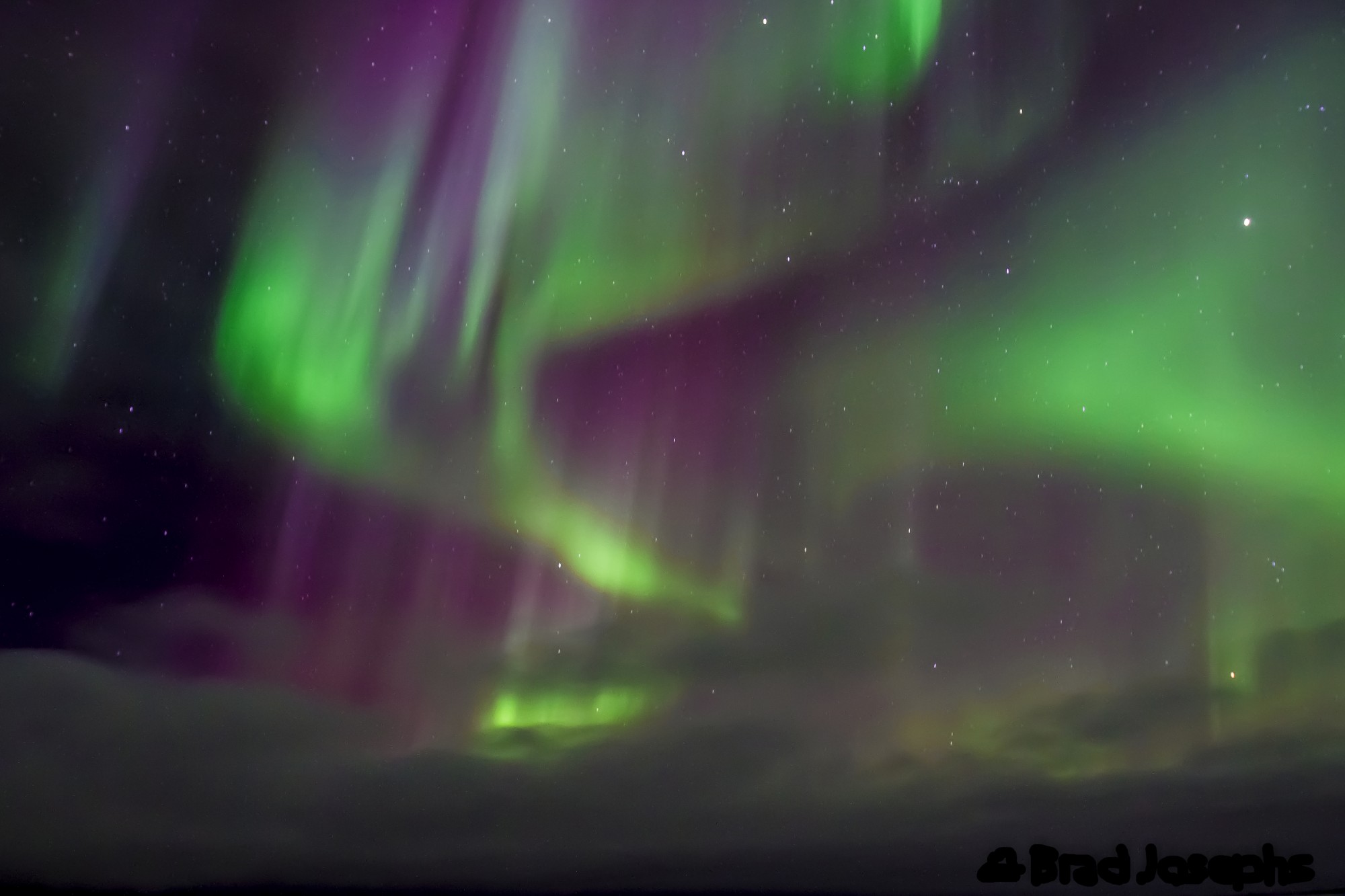We know today that the aurora borealis, commonly called the “northern lights” occurs when electrically charged particles from the sun zoom into Earth’s atmosphere. The phenomenon is most commonly witnessed during fall and winter months at high-latitude locales, including Alaska and northern Canada.
But when you witness the lights streaking across the sky, reaching a height of up to 620 miles, it’s easy to understand how so many cultures came to develop mystical stories about them.
The aurora, with its striking colors and dance-like movements, seems otherworldly. The lights gave some communities comfort and happiness, while others dreaded their reappearance, considering them a bad omen.
15 Myths and Folktales About the Northern Lights
1. When they witnessed the lights, many Inuit, the Arctic’s Indigenous peoples, believed they were spirits of the dead playing a game with a walrus skull as the “ball.” The Inuit of Nunivak Island in the Bering Sea had their own flipped take on this story, believing that it was walrus spirits playing with a human skull.
2. Indigenous Greenlanders believed that the lights were dancing spirits of children who had died at birth.
3. For Wisconsin’s Fox Native Americans, the aurora gave them a sense of foreboding—representing their slain enemies preparing for revenge.
4. In Alaska, some Inuit groups saw the lights as the spirits of the animals they had hunted, namely beluga whales, seals, salmon and deer.
5. In Norse mythology, the lights were the spears, armor and helmets of the warrior women known as the Valkyries. They rode on horseback, leading fallen soldiers to their final resting place at Valhalla.
6. The Inuit of Hudson Bay dreaded the lights, believing they were the lanterns of demons pursuing lost souls.
7. In Finland, a mystical fox was thought to have created the aurora, its bushy tail spraying snow and throwing sparks into the sky.
8. Some Algonquin peoples believed their cultural hero, Nanahbozho, relocated to the far north after he finished creating the Earth. He lit large fires, which reflected back to his people in the form of the northern lights. This let them know he was thinking of them, even from far away.

An inukshuk on Hudson Bay, Canada. Inukshuks may have been used by Native Arctic peoples for navigational purposes. © Brad Josephs
9. In perhaps the best oxymoron in British folklore, Scottish legend refers to the lights as “Merry Dancers” engaged in bloody battle.
10. Native Americans of the Great Plains thought the light display came from northern tribes cooking their dead enemies in huge pots over blazing fires.
11. Inuit in Point Barrow, Alaska’s northernmost spot, believed the aurora was evil. They carried knives to protect themselves from it.
12. In Estonia, one legend said the lights appeared when whales were playing games. Another said they were sleighs taking guests to a spectacular wedding feast.
13. Wisconsin’s Menominee Native Americans saw the lights as torches used by benevolent giants to spear fish at night.
14. Fishermen in northern Sweden took the lights as a good omen, believing they reflected large schools of herring in nearby seas.
15. If you whistled at the aurora, some Native Americans believed it would sweep down and take you away. Clapping your hands, however, would cause the lights to retreat, keeping you safe. Meanwhile, in northern Scandinavia, the Sami people hid indoors during the light show.
Look for the northern lights and learn about Arctic cultures on Nat Hab’s Northern Lights & Arctic Exploration in Churchill, Manitoba this winter.
By Marsea Nelson, WWF Guest Blogger




























This is good
That’s a good story telling, my family says number
15. But I don’t believe it I alway whistle at the
northern lights, clap, and sing. I like looking at
Northern lights, it’s so beautiful.
the aurora borealis is something that scares people away it takes naughty kids away
Really interesting article! Thank you so much.
Tiger is our national animal but it is very unfortunate that we have not taken any Measures to save this magnificent animal.I feel sad